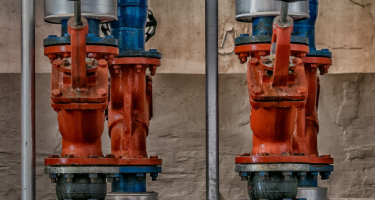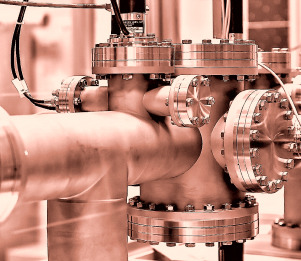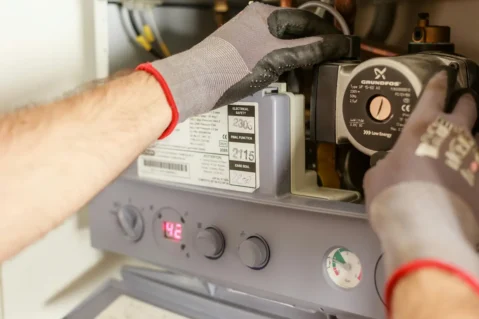
October 2, 2025 /
Gas equipment – part 2
Modern technologies have made gas boilers even more efficient and economical. Condensing models allow you to use additional heat that previously was simply lost up the chimney. The difference between atmospheric and fan-assisted burners directly affects efficiency, operating noise, and boiler price. No less important is the choice of heat exchanger — cast iron or steel — each has its own features and limitations. In this article, we explain how these elements affect equipment service life and comfort level. This knowledge will help you select a boiler that best matches your needs.
Using condensing boilers is one of the most sensible solutions in heating equipment.
The operating principle of condensing boilers has been known since the 19th century. It consists in using the so-called “latent” heat of condensation of water vapor in the flue passages. In conventional boilers this heat is lost to warming the atmosphere. However, it became possible to use this principle in boiler manufacturing only relatively recently, when suitable materials appeared that can resist corrosion. The water condensate that forms dissolves CO2 and thus causes corrosion of steel and cast iron.
Gas in the combustion chamber does not burn with the usual flame but rather smolders; complete combustion of the fuel occurs. Before entering the flue, the flue gases pass through helical heat exchangers that remove heat so effectively that the flue can be made of inexpensive polymer materials. In addition, the user gains extra thermal energy released during the condensation of water vapor contained in the flue gases, which is irretrievably lost in traditional boiler designs. Therefore, boiler efficiency reaches 109% (taking into account the heat of condensation of water vapor from the flue gases).
The optimal operating regime for condensing boilers is 40/30 °C. These are the water temperatures in underfloor heating systems or low-temperature panel heating systems. In this case, the condensation mode is maintained throughout the entire heating season. Condensing boilers are ideal for such heating systems. In more common radiator systems with a heat-carrier temperature of 75/60 °C, boiler efficiency is also quite high. Only on the coldest days of the heating season, when maximum heat-carrier temperature is required, does the return temperature rise above the dew point so that condensate does not form. It should be emphasized that condensing boilers are designed to work with low-temperature heating systems and only with them fully justify their use.
Floor-standing gas boilers with atmospheric and fan-assisted burners
Floor-standing gas boilers with atmospheric burners are generally cheaper due to the lower cost of the atmospheric burner and usually operate more quietly.
Note that an atmospheric burner is an integral part of the boiler and included in its price. Boilers with fan-assisted burners have slightly higher efficiency and cost more. Boilers designed for fan-assisted burners can be fitted with burners that run on either gas or liquid fuel.
A fan-assisted burner is usually sold separately and, as a rule, its cost is not included in the boiler price.
The output of floor-standing gas boilers with an atmospheric burner in most cases ranges from 10 to 110 kW (although some manufacturers produce even more powerful boilers of this type, with single-unit outputs up to 920 kW), while models with interchangeable fan-assisted burners can reach outputs of several thousand kilowatts!
By connecting several boilers with atmospheric burners in a cascade, one can achieve outputs of many hundreds of kilowatts and heat facilities with areas of thousands of square meters. Thus, the consumer can always choose an optimal output option — from a small country house to a huge building.
Gas boilers can be equipped with a single-stage burner (operating only at one power level), a two-stage burner (two power levels), or a modulating burner (smooth power regulation).
Since full boiler output is required, according to various data, for only 15% to 30% of the heating season — meaning it is excessive for 70% to 85% of the time — it is clear that it is more economical to use a boiler with a two-stage or modulating burner.
Main advantages of a two-stage burner boiler
- longer boiler service life due to reducing burner on/off cycles by about 70%;
- operation on the first stage at reduced output and fewer on/off cycles saves gas and therefore money;
- lower volume of flue gases and fewer harmful substances released into the atmosphere;
- a two-stage boiler broadens options for use with storage water heaters of various capacities;
An even greater effect is achieved when using a boiler with a modulating burner.
Heat exchangers of floor-standing gas boilers
The heat exchanger of a floor-standing gas boiler is usually made of cast iron or steel. There is no unequivocal opinion on which material is better.
- Cast iron is less prone to corrosion; cast-iron heat exchangers are usually made thicker, which can have a positive effect on service life. However, cast iron is more brittle, and there is a risk of microcracks during transportation and loading/unloading. In addition, in the operation of cast-iron boilers with hard water, due to the design features of cast-iron heat exchangers and the properties of cast iron itself, destruction over time can occur as a result of local overheating caused by improper operation.
- Steel heat exchangers are lighter and less susceptible to transport shocks. But with improper operation, a steel heat exchanger can corrode. Creating proper operating conditions for a steel boiler is not very difficult. It is important that the boiler temperature does not drop below the dew point temperature for the flue gases. Otherwise, condensate forms on the boiler walls — a weak solution of carbonic acid (gas boilers) or sulfurous acid (diesel boilers). To avoid this, the boiler is kept at a consistently high temperature — hence higher fuel consumption.
A good designer can always create a system in which the boiler’s service life will be maximized.
Floor-standing gas and liquid-fuel boilers
Floor-standing gas and liquid-fuel boilers are produced as single-circuit (heating only).
Note that any single-circuit boiler can be paired with an indirect storage water heater for domestic hot water. In country houses, tanks from 100 to 300 liters are most popular, but models up to 1000 liters also exist.
Indirect storage water heaters are those in which water is heated by the boiler’s heat carrier.
As for output: as a rough guide, you can use the ratio — 1 kW of boiler output per approximately 10 m² of well-insulated space with ceiling heights up to 3 m.

Chimney
Modern chimneys: requirements for materials, shape, and insulation for boilers
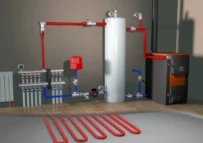
Heating system automation
How automation maintains comfortable temperature and protects the heating system
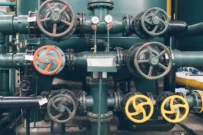
Room for gas equipment
Standards for boiler rooms: from air inlets to minimum façade distances
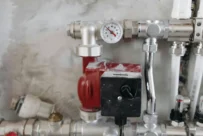
Gas equipment – part 3
Efficient heating: boiler capacity calculation and an overview of alternative heaters
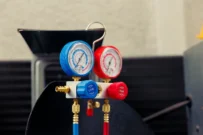
Gas equipment – part 1
Modern gas boilers: floor-standing and wall-mounted solutions for houses and apartments
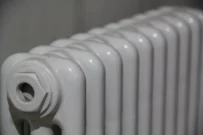
What kinds of heating devices are there?
Radiators, convectors, and underfloor heating: comparing design, heat output, and areas of application.

